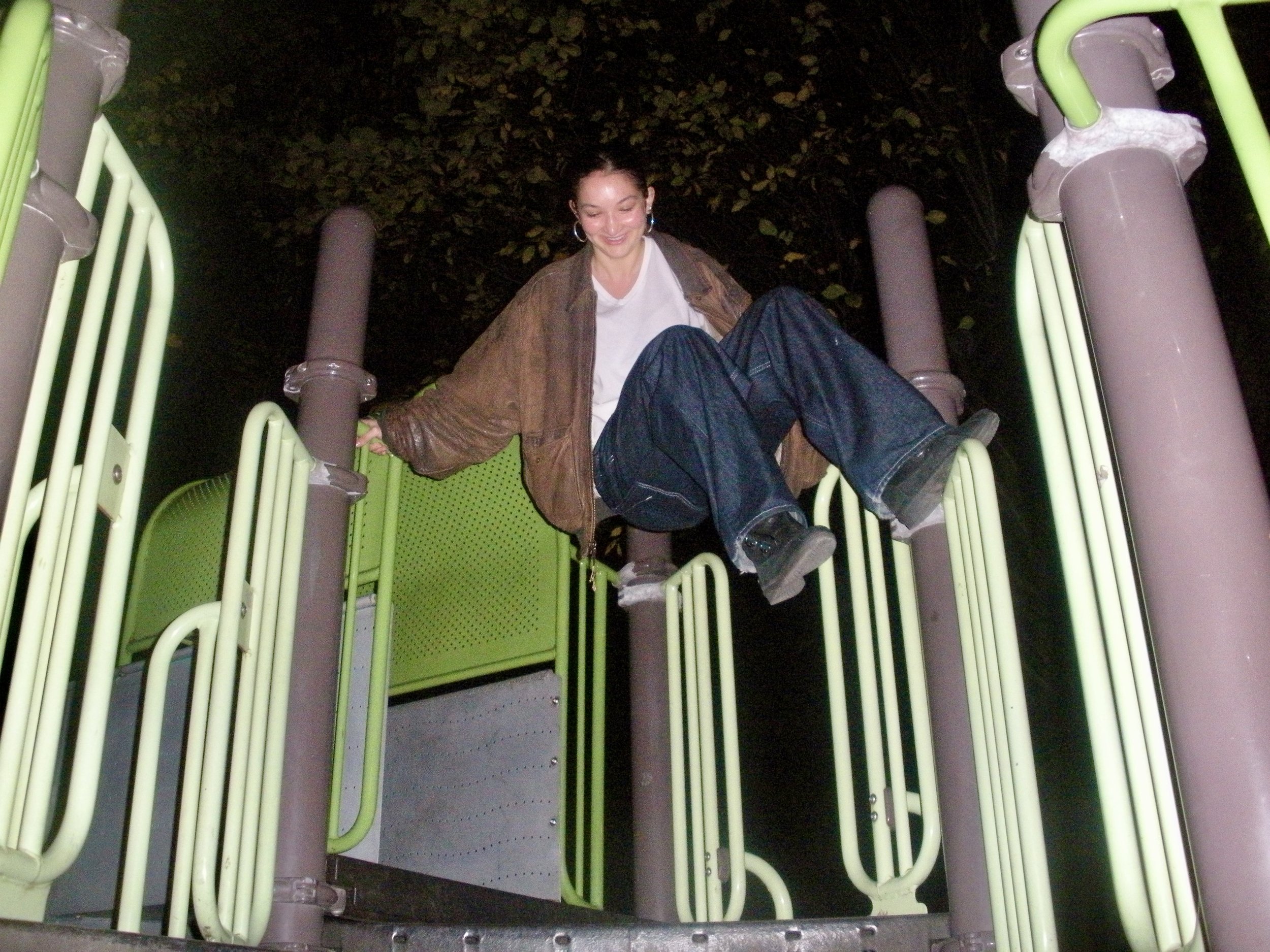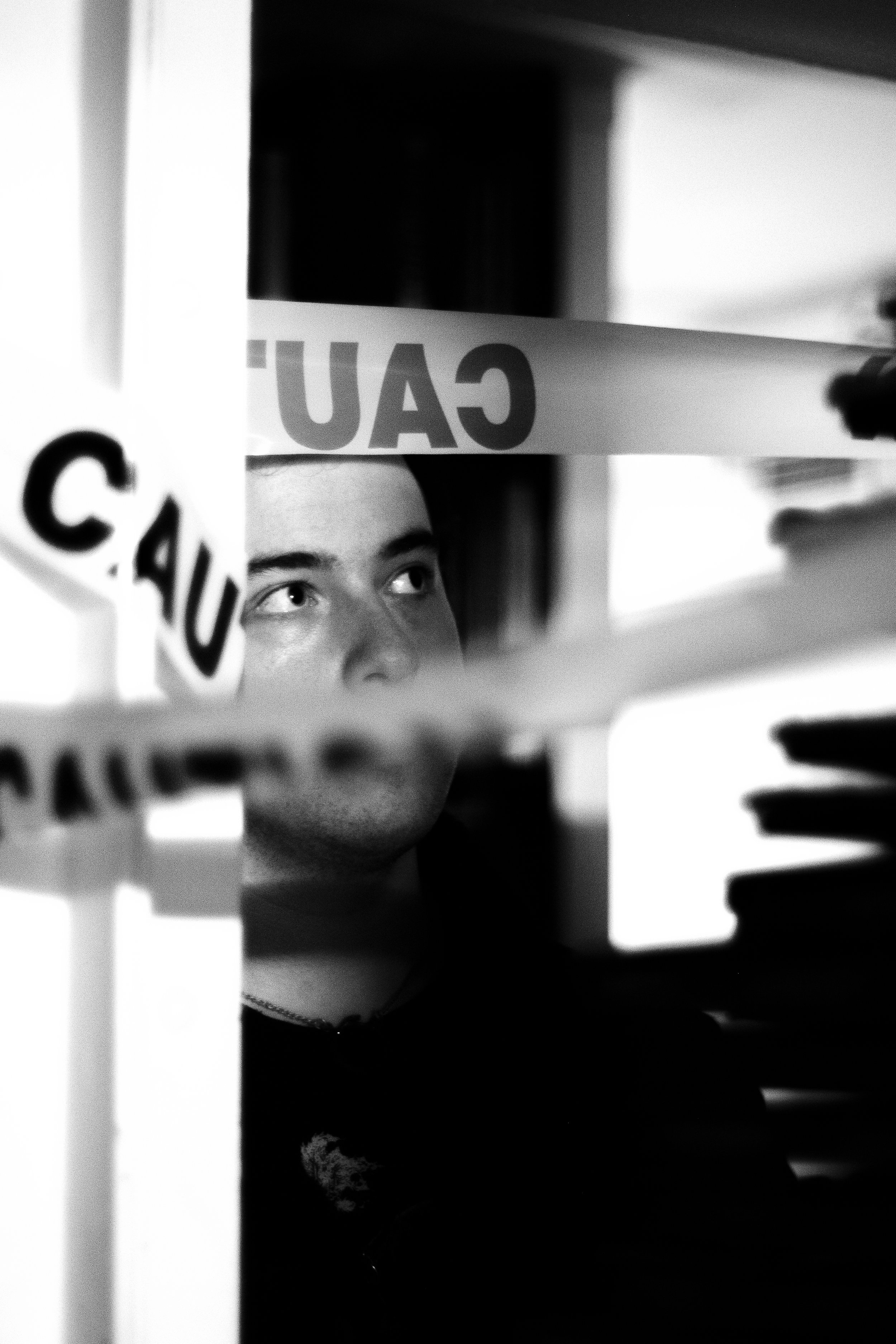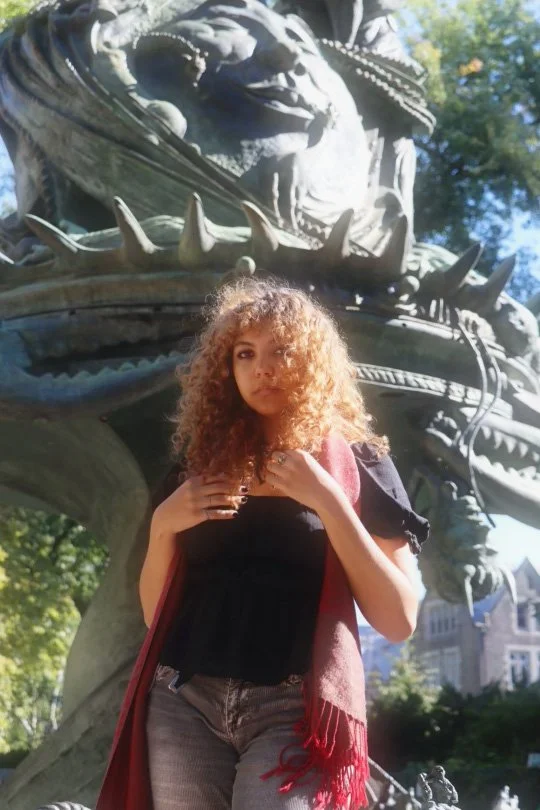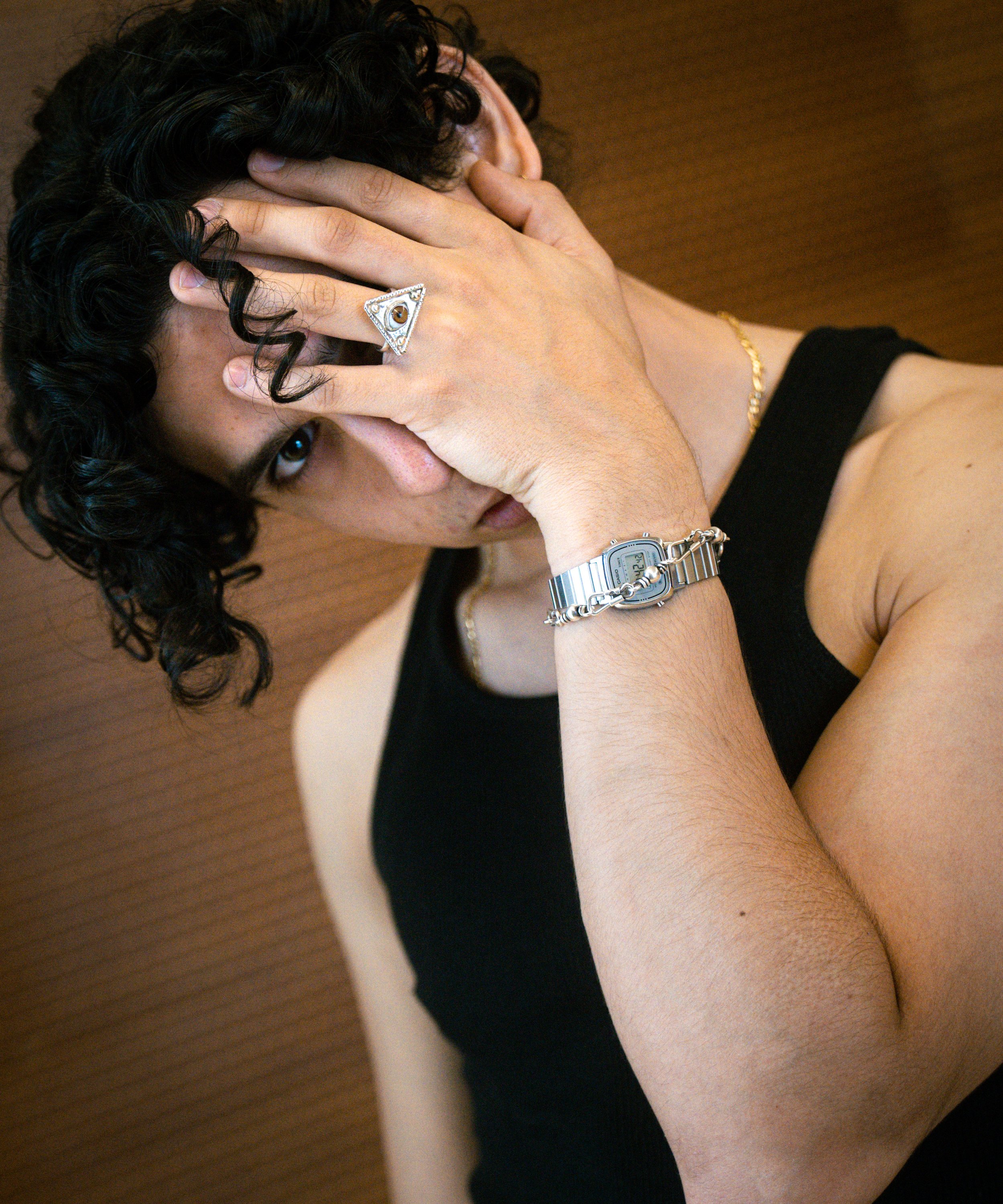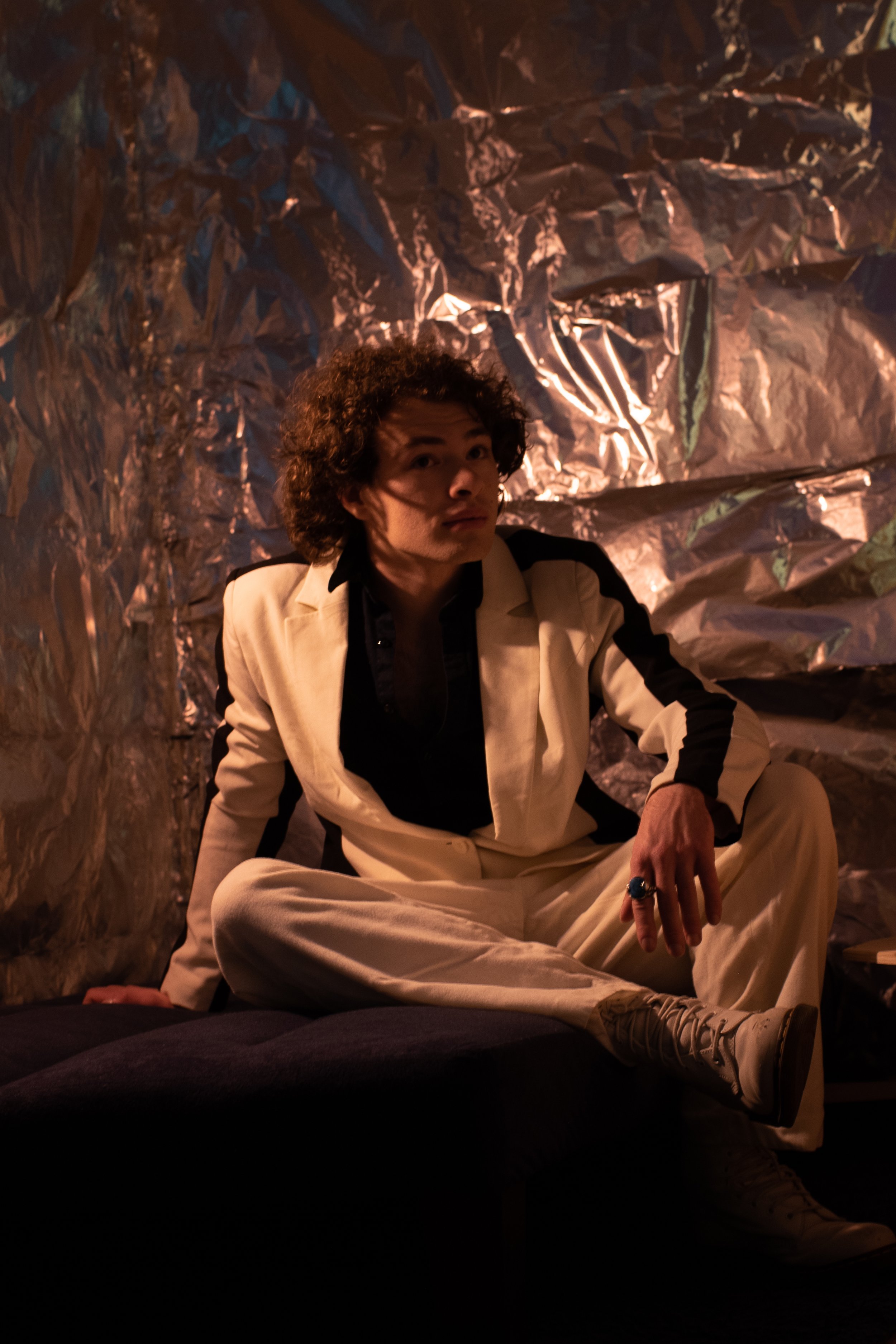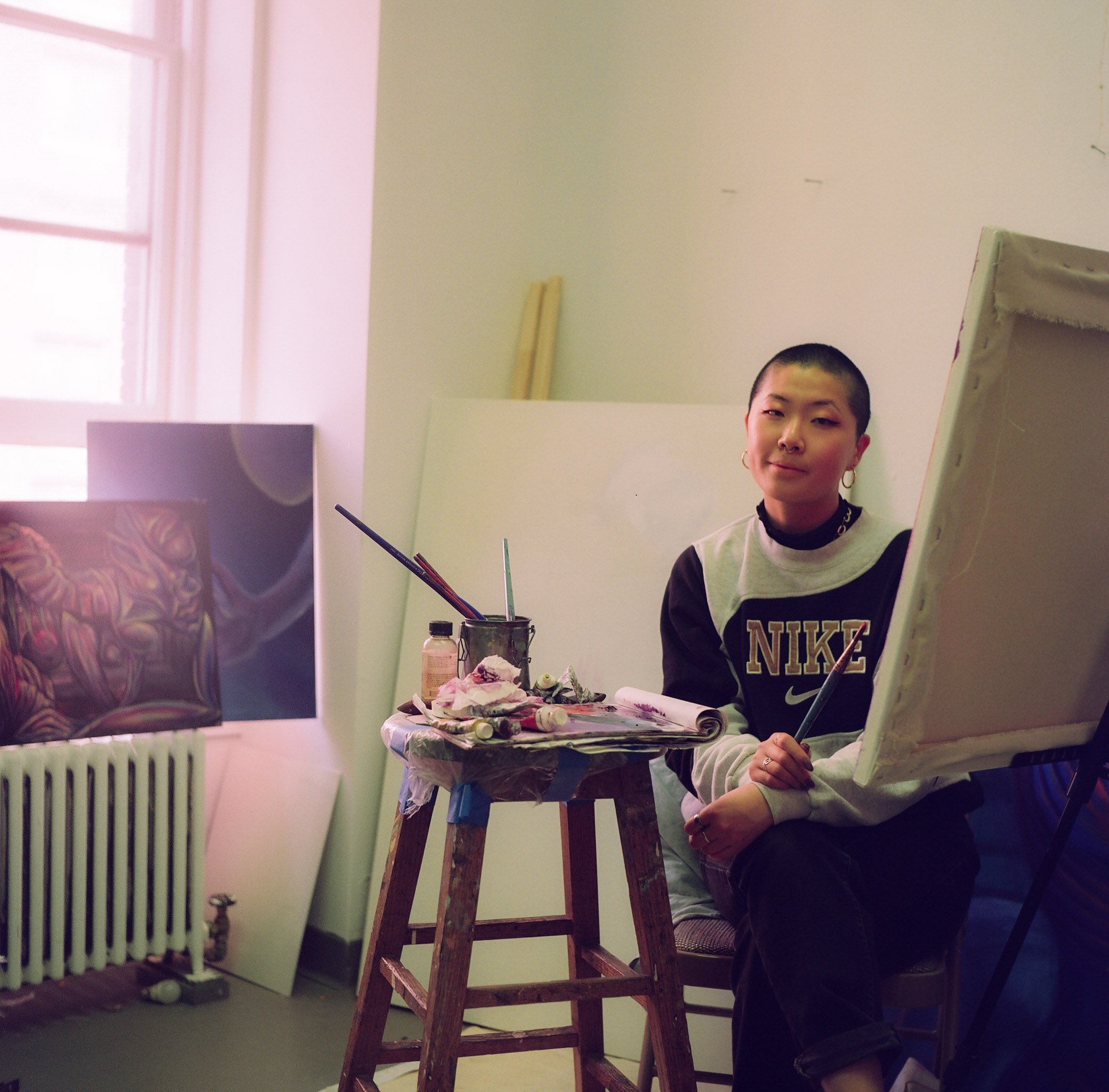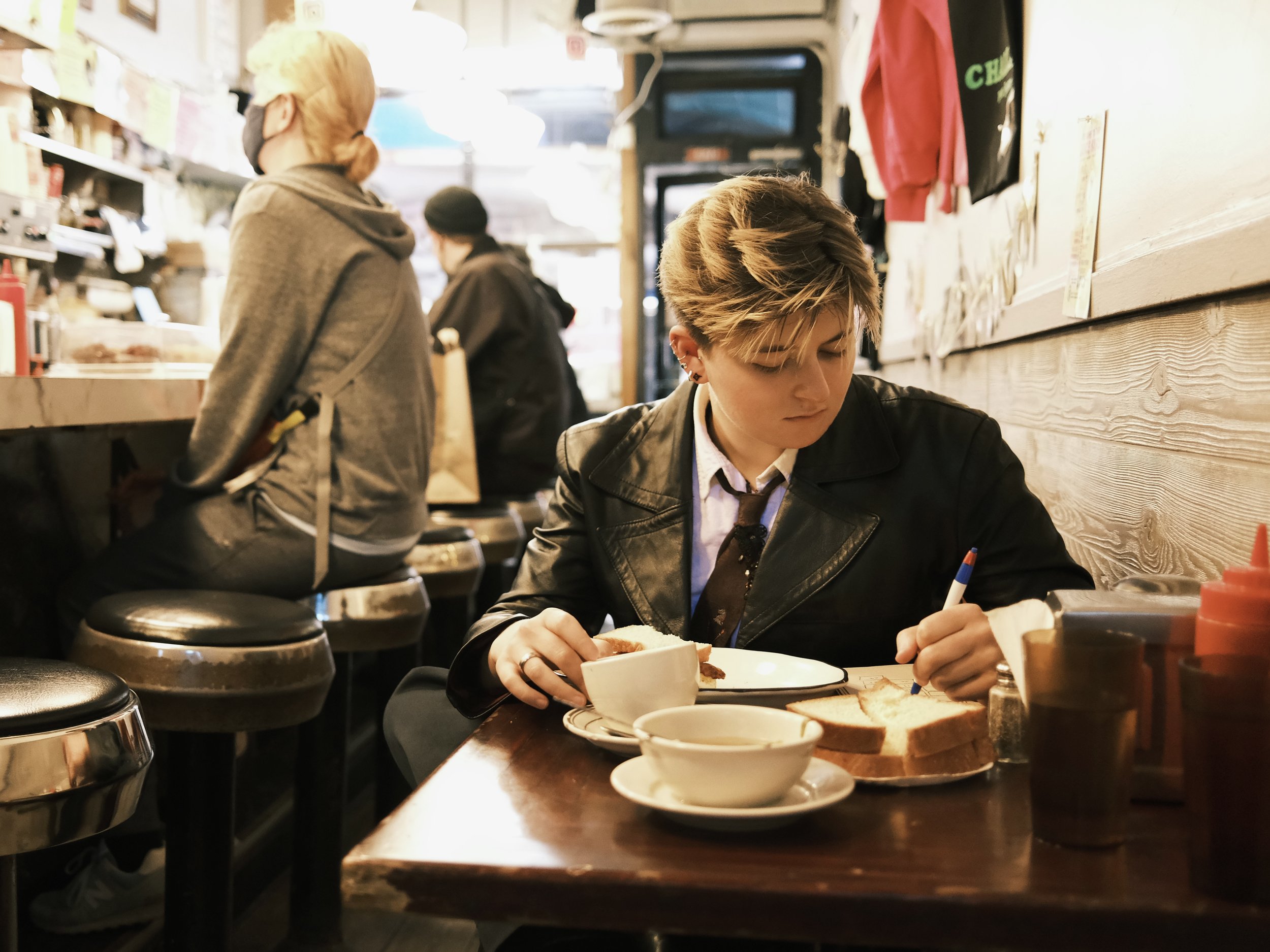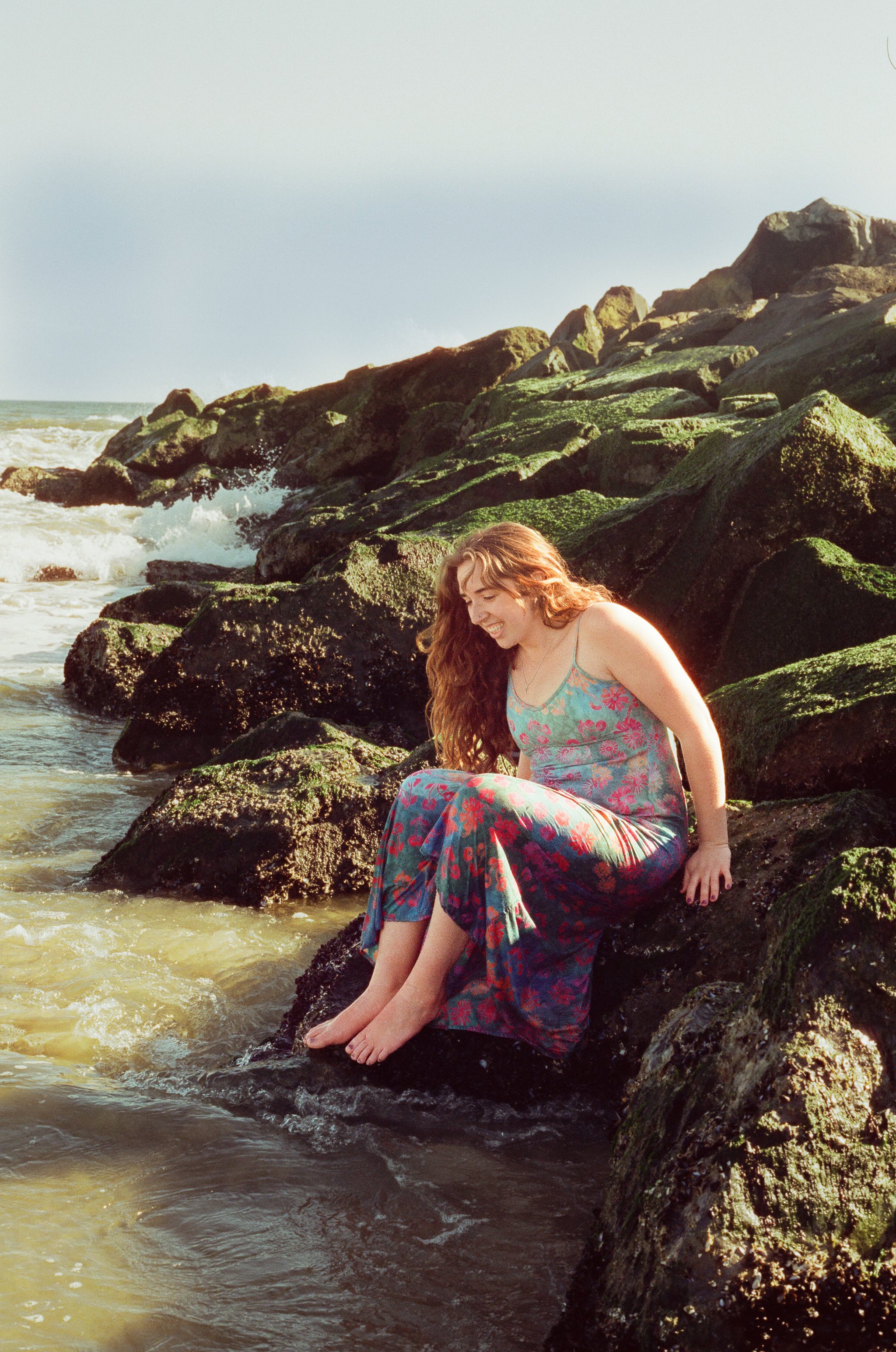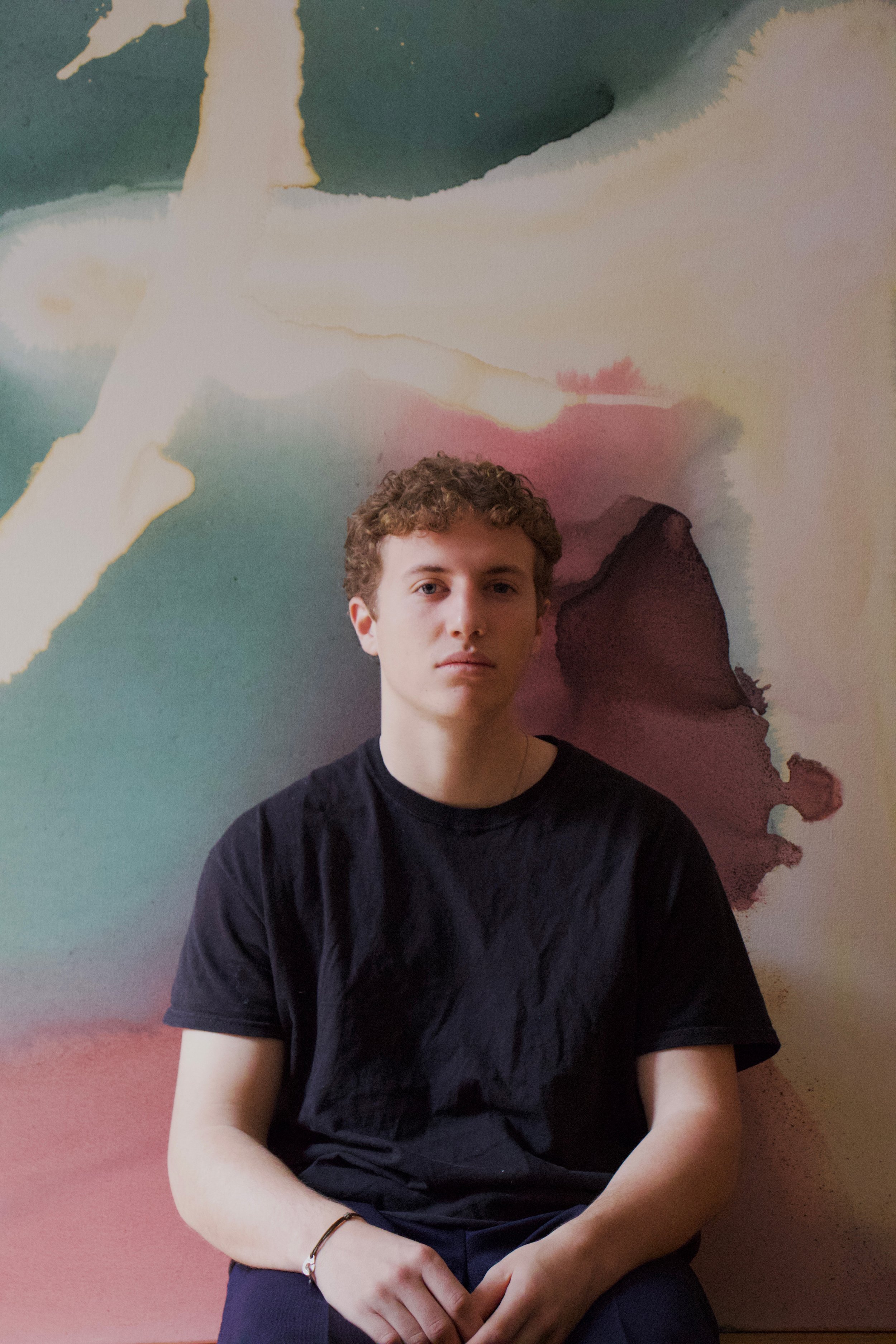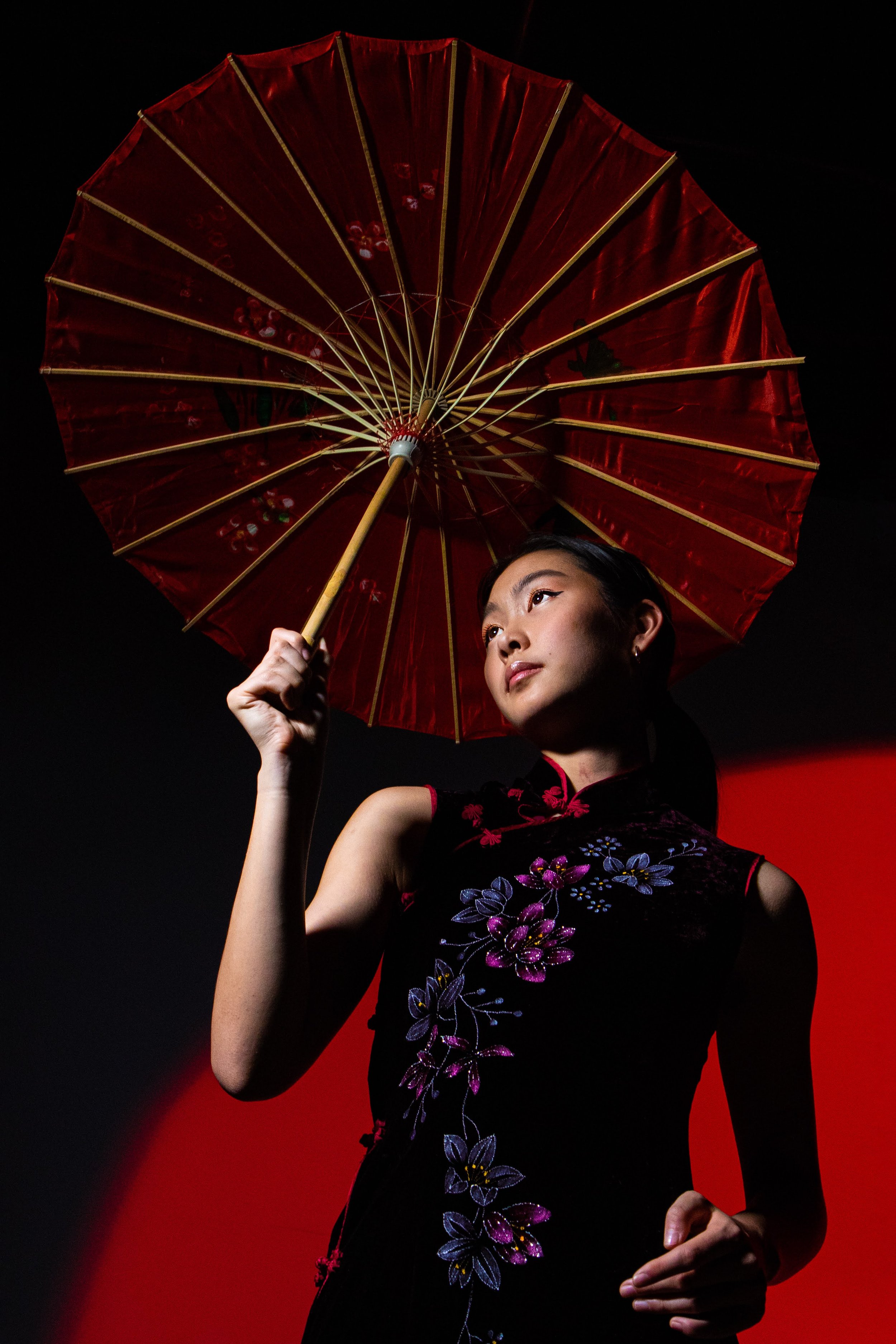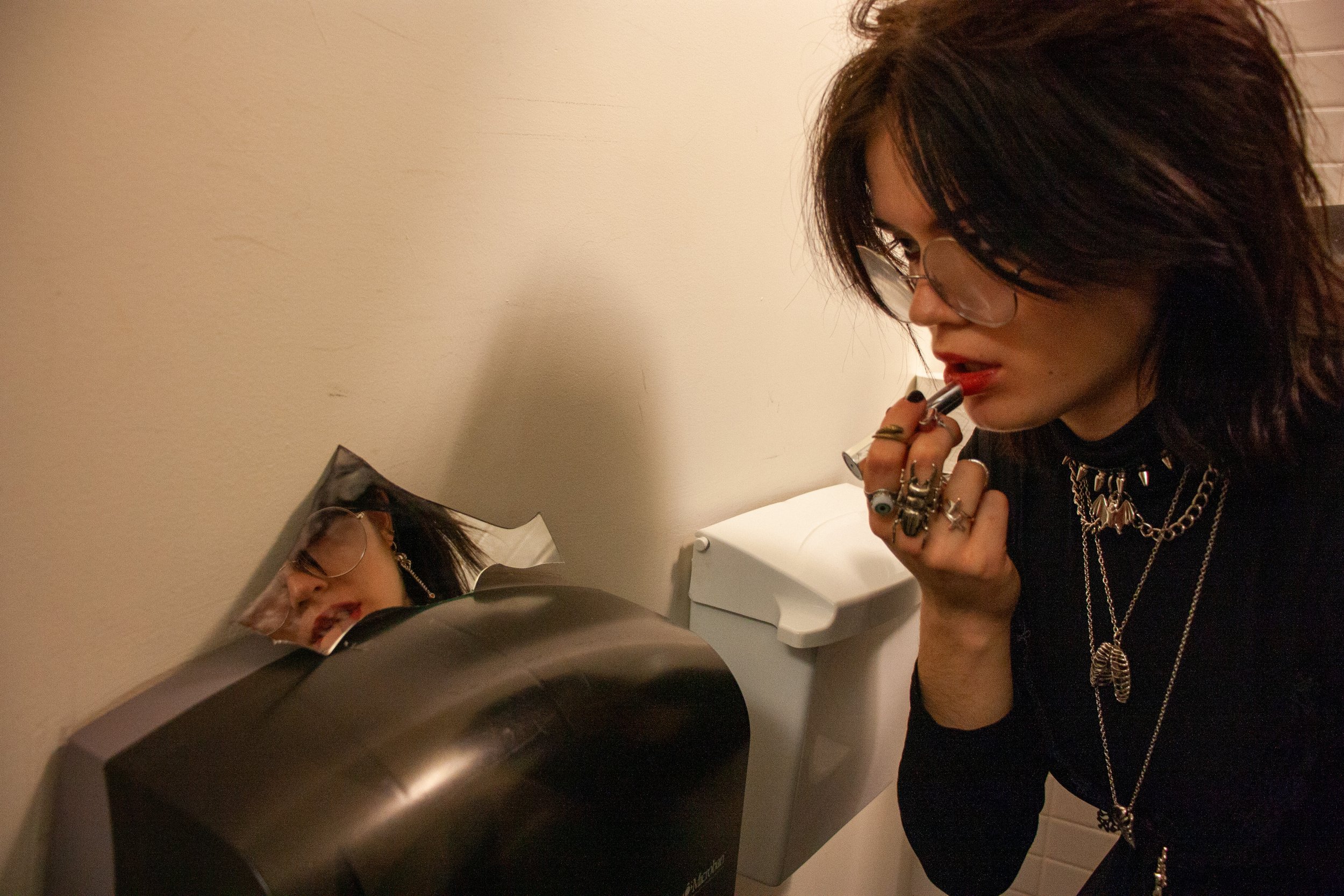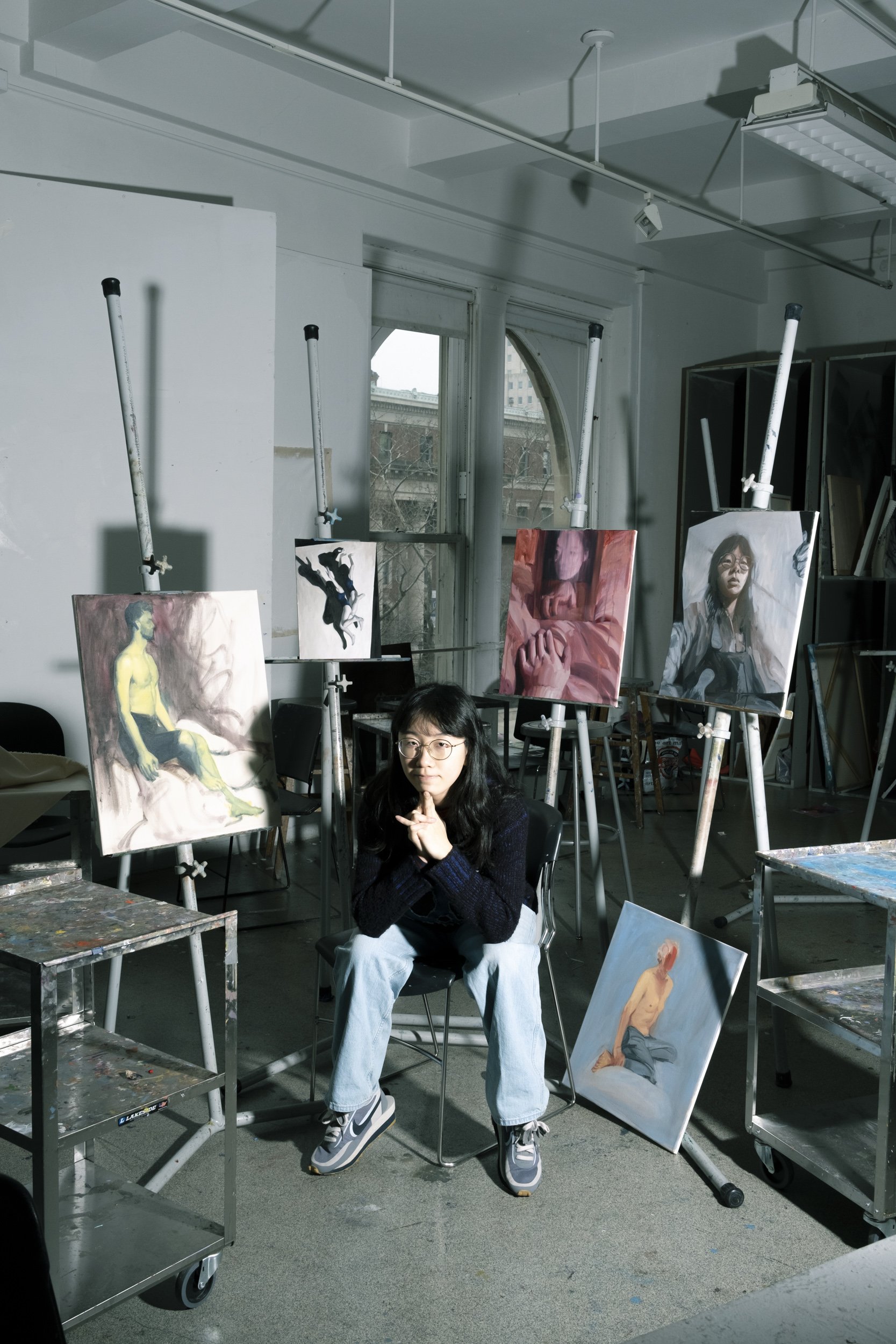



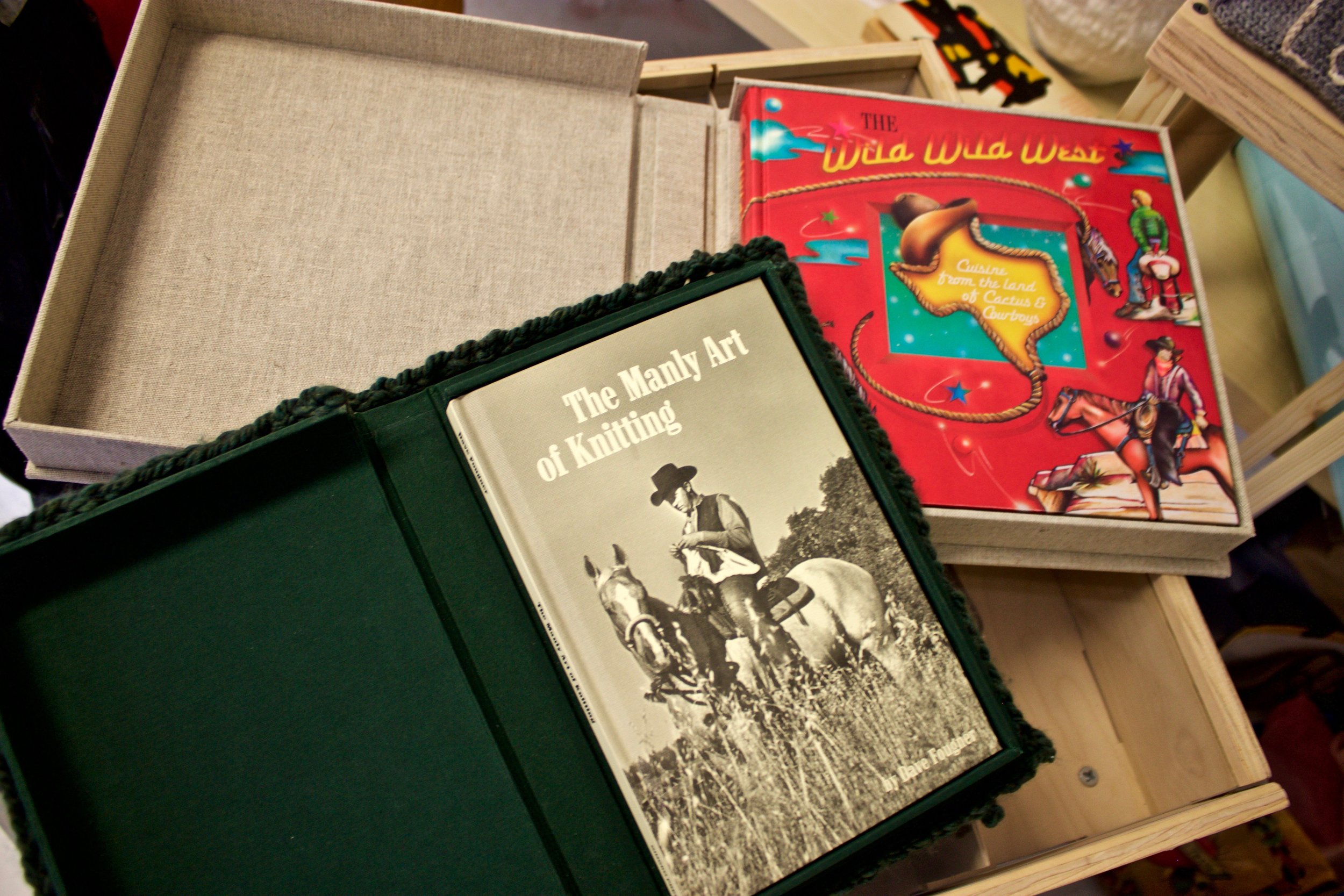


Photography by Shelby Hettler
Interviewed by Grace Nkem
Care to introduce yourself?
I’m Sam; I’m a senior double majoring in art history and visual arts. I’m from LA, originally. Sam responds. “And she has no idea what she’s doing with her life,” she adds in the third person.
What got you started in visual art?
Oh boy— I have been doing visual arts literally since I was five. I remember there was an art-after-school camp program thing that was 6+ and I went in and begged them to let me in, even though I was 5, and that’s probably where it all got started. I did like a very formal painting training, and then by the time I was like–I have to construct this timeline in my head hold on...how old are you in middle school?–12, I totally rejected that and I was so over painting. I feel like I’m describing a modernist trajectory, I hate that. I was heavily involved in sculpture over the course of high school, and when I got here I got involved in printmaking, which is what I’m focusing on now.
What draws you to printmaking?
Printmaking, I think, has the most opportunity for experimentation actually, even though I think many people would view it as a preliminary step, and very structured. Because the nature of it is multiples, you have the opportunity to play around with each multiple and change things. I also think that paper gets overlooked as a medium. There’s very cool things you can do with paper. The whole joy of a print is you don’t know what you’re going to get until you pull the print and look and see—with painting and sculpture, you kind of see what you’re doing as you do it. But with prints, you don’t know until you’ve printed. I have this shirt I got at the Blond Artbooks booth at the BABZ art fair last year that says, “like sex, printmaking is not solely a means of reproduction.”
Art history?
I’m trying to think of a path. I can’t pinpoint it as much as visual arts. My dad is an architect, and when I was little, whenever we would go on vacation we would travel, go somewhere, and see the house by the person, and I think that form of architecture...history…..blends with this. I think that really got me into it. I don’t know, I was really into it through all of highschool. When I was in senior year I took art history, I was really excited about it. My dad being an architect, would take us to all of these houses and museums—maybe he is the architecture side and I picked up the art side. A lot of those houses would have art in them.
How has being an art historian affected you as an artist?
Oh my god it’s given me so many issues—ha, no. I think there’s a divide in art making in that some people think you have to know art history and some people think that that gets in the way of art making. I think it’s important to know the trajectory of art history to know what tradition you’re a part of or what you’re breaking from. And I’m not saying you have to be an expert—I can tell you very little about Rococo—but it’s important to know the trends. I focus mostly in the Postmodern era, and with all that institution-critical content, I’m always like, what am I doing with my art, what is it doing? On the flip side of that, I think it’s rare to find an art historian who also practices art, and I actually think that is a shortcoming in the field. A lot of art historians position themselves as critics without having the technical experience with a medium, which I think sometimes leads to (sometimes just blegh) a lack of understanding.
What are you currently working on?
Prints! I have been making so many etching plates lately and feeling unsatisfied with them, and then I just keep making more! I’ve been making a crazy amount of prints. Actually what I’ve been working on is a combination of silkscreen monotypes and kind of pseudo-monotypes with etching plates. They’re not actually monotypes because I’m using the same matrix. I’m pulling the ghosts of these etching plates until the image actually fades. I’m also making a lot of clam-shell boxes, which is a bookbinding technique.
Do you avoid the human subject—or do you approach it through other means? (I don’t mean to art-historicize you but,) Your work seems to allude to a human presence.
Yah, my work definitely alludes to human presence. I mostly work with the themes of the interior, as a means of addressing the notions of storing versus saving, and functionality versus sentimentality. My work isn’t figurative in that it physically depicts a human subject, but it definitely is working around the presence or lack of a human in that space.
What has Columbia done for your art?
I think the visual arts department at Columbia is one of the best and most underrated departments the school has to offer—but I think that it should stay that way. The class sizes are small and you kind of know everyone in the department, which is a nice thing. The fact that they give you your own studio for you senior year is amazing—that doesn’t even happen at art schools.
Best visual art class?
Drawing into Print with Tomas and Advanced Printmaking with Kiki Smith, Sara Sze, and Valerie Hammon. Best art history classes I’ve taken are Minimalism Post-Minimalism with Branden Joseph and Institutional Critique with Rosalyn Deutsch.
Thesis?
I’m being crazy and I’m actually doing two theses— because I’m majoring in art history and visual arts separately, not doing the combined major (I did that so I can do a full year thesis in both) so for visual arts I’m producing a full body of work, and they give you a studio which is great, and I’m focusing on the themes I discussed: interiority, sentimentality, functionality, through means of printmaking, bookbinding, and a lot of knitting.
And for my art history thesis I’m writing my thesis on Christopher D’Arcangelo, an institution-critical conceptual artist of the 1970’s. There is a huge lack of scholarship on him, and I’m trying to root his interpretive action-based work in the trajectory of institutional critique.
What inspired this? Academic/professional/artistic influences?
In Institutional Critique, the class with Deutsch, one day we briefly discussed d’Arcangelo, and I was intrigued—mostly because of the lack of scholarship on d’Arcangelo. There’s no monogram on him, there’s only been like one exhibition. There’s like this gap in art history, and I wanted to do more work on him. Last summer I went through his archives at the NYU library: I was in Bobst, the bleakest place on this planet, twice a week every week. But, I got to go through all his personal notes and writings and objects–it was a very cool primary-source-based investigation.
Tell me about your time at Postcrypt.
I joined Postcrypt as a freshman and I just, you know, kept showing up to help set up shows. I kept helping to print things, install, events, whatever, and I became very close with the people in Postcrypt. When I was ‘younger’ in Postcrypt, Katie and Kt were like my ‘guides,’ and we just worked on a lot of shows together, and so I’ve just been there. I stayed with it since freshman year, and here we are today.
Talk about some of your art-world work?
Speaking of Katie and Kt, we curated a show outside of Postcrypt over the summer—a show on Kt’s roof one summer, and sent out a call to artists on NYFA, and got a lot of great artists from all different age-groups and all different areas of the city. I also worked at Pace prints for about six months, Sophomore year through the summer, which was great and I loved being surrounded by all the prints. Last summer I started working at a book-bindery called Small Editions, where I’m still working. And I love being there; I’ve learned so much about bookbinding and artist books. I’m also currently working at a small gallery, which is an interesting contrast to Pace which is a large, established gallery.
If you could only consume one type of media for the rest of your life, what?
Oh no, oh no. Images. Both art and TV. Have to finish this season of the bachelor.
I know everyone saw this coming, but: LA or New York? (arts scene)
Honestly, I love both. If I’m in New York for too long I get a little antsy for LA, but if I’m in LA too long I get antsy for NY. NY definitely has a larger more established arts scene with more niche opportunities, actually. I think life in LA is easier and more relaxed, yep, I don’t know. I don’t know where I’ll be, basically.










